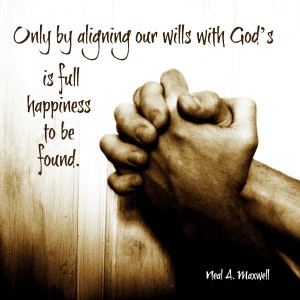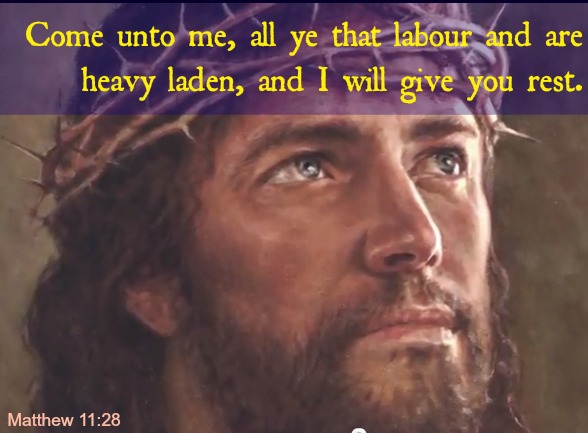This weekend I attended the funeral of a friend. As I watched the proceedings, I couldn’t help but note that while there are many similarities between Mormon funerals and others, there are also differences. Those differences are significant because they illustrate the way Mormons view their beliefs.
The first thing a person who isn’t Mormon might notice when he arrived at a Mormon funeral is that most of the people aren’t dressed in black. Mormons see the funeral as a time of sadness for those who loved the person who died, but more in the way we’re sad when a friend or family member moves far away and we won’t be seeing them for a long time, not as a permanent end to life or love. We don’t wear black the day the day a friend or family member moves away.
Mormons believe that through Jesus Christ’s atonement, everyone will be resurrected and live forever. Most people will go on to live in Heaven. Only those who are truly evil or have denied the Savior after being shown for certain He lives would be denied Heaven, although not everyone will live with God. The Bible sets out specific requirements for that special privilege, but Mormons do not believe you have to have been Mormon in this life to go to Heaven or even to live with God, although you will have to accept the gospel once you’ve received a testimony of it. All levels of Heaven are wonderful places to spend eternity.
Mormons believe we take with us what is in our hearts and minds. We also take our relationships with us and our families can be forever. Mormon marriages that occur in temples are joined not until death forces a divorce, but forever. Children born or adopted into those families are also forever.
With all this in mind, Mormons see death as a journey to a new home, not as the end of life or the end of family. The family takes comfort in knowing that they won’t just be friends in the next stage of life, but that the loving family they worked so hard to create continues on and in time, they will all be together again, never to be separated after the reunion. Friendships will continue. Death is a time of reunion for those who died—a chance to be reunited with parents, children who died young, and other relatives and friends. There is cause for celebration in this, even for those whose hearts are broken with loneliness for the time between that death and their own.
There are tears at a Mormon funeral, of course, but there is also laughter. Those gathered are celebrating a life. Mormons consider mortality to be the second part of a three stage life, and we celebrate when a person graduates onto the final stage.
Mormon funerals begin with a viewing if the family chooses. The person who died will, if he’s a temple-goer, be buried in the while clothing he wore there and family members and invited church members help to lovingly dress the family member before the viewing, rather than leaving it to strangers. When the viewing ends, the family gathers for a prayer and the casket is closed.
At the funeral, the guests arrive and are seated. The casket is brought in to the front of the chapel and the family enters, taking the first rows of the chapel. There is an opening hymn and prayer given by those the family chose. In fact, all of the funeral is planned by the family. There will also be a closing song and prayer and often music during the service as well. There are several speakers. Generally, the bishop (lay pastor) is one speaker and also conducts. However, since they are lay leaders, employment may prevent them from doing so and then another leader or family member takes on that role.
Usually one speaker talks about the plan of salvation—why we came to earth and what happens to us when we die. This is a positive, uplifting message of a wonderful plan by a loving God, and includes reassurance of a joyful eternity. It explains the beliefs of the person who died to those who are not members and reminds those who are members of those beliefs, which are entirely comforting.
Other speakers talk about the person who died, sharing memories of the person’s life. Speakers generally focus on the inspirational and happy times, which is why there is often laughter. Mormons do not consider this disrespectful. When death is merely a graduation, it is suitable to treat the funeral as a respectful celebration. The talks allow those who attend to remember the person’s life and personality, rather than focusing entirely on the sometimes difficult circumstances leading up to the death. The celebration, while quiet and reverent, send everyone home comforted and remembering the good times with joy. Talks often remind those who are grieving of how to move forward and prepare for the coming reunion.
I love Mormon funerals because while there are tears, there is no hysterical crying or despair. Mormon funerals focus on the Savior, Jesus Christ, on the joy of a life lived, and the promise of a meaningful eternity with God.
After the service, everyone proceeds to the cemetery, where the grave is dedicated. Church members will have provided meals for family members who came for the funeral and in fact, meals would have been brought in beginning the day of the death. Following the funeral, the church will monitor family needs. Counseling is available for those who need it and homemakers who suddenly find themselves needing to support their children will receive financial assistance if needed and help finding employment. Church members will be there in any way they might be needed in the months and years to come.
About Terrie Lynn Bittner
The late Terrie Lynn Bittner—beloved wife, mother, grandmother, and friend—was the author of two homeschooling books and numerous articles, including several that appeared in Latter-day Saint magazines. She became a member of the Church at the age of 17 and began sharing her faith online in 1992.



